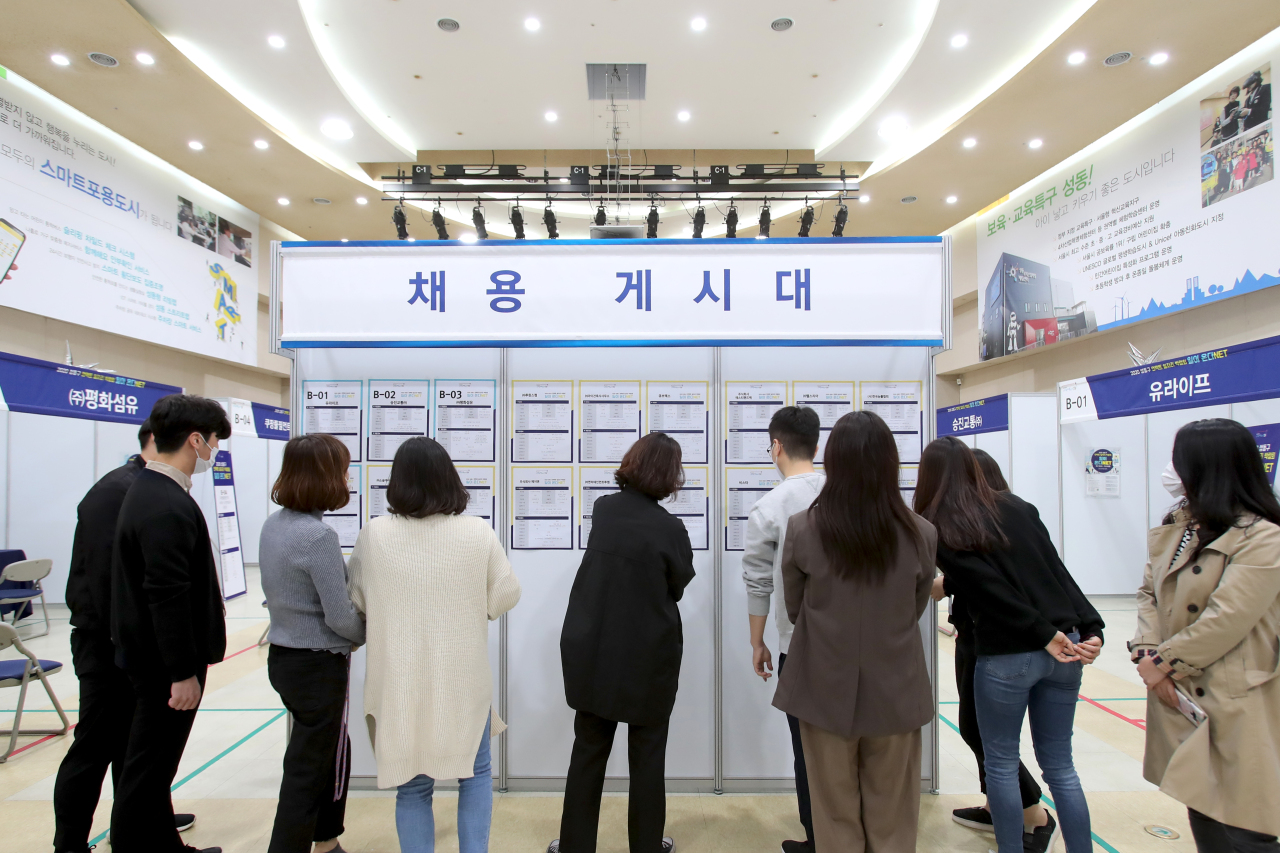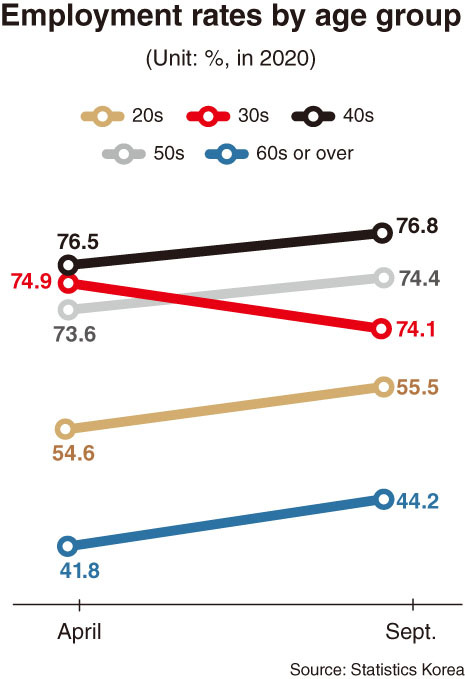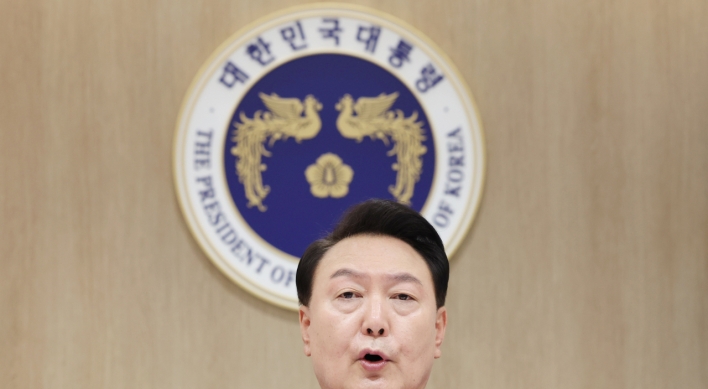[News Focus] Employment rate for 30-somethings hits 5-year low
Index improves for other age brackets in 2nd half
By Kim Yon-sePublished : Nov. 8, 2020 - 16:54

SEJONG -- South Korea saw its employment rate slide to 60.3 percent in September, its lowest level in four months since it hit 60.2 percent in May.
People in their 30s have been hit hardest, government data suggested.
According to Statistics Korea, the employment rate for those aged between 30 and 39 recorded 74.1 percent. This was the lowest figure in more than five years (65 months), since April 2015, when it stood at 73.8 percent.
The figure for September 2020 was 2.4 percentage points lower than the figure from a year earlier, 76.5 percent, and 1.7 percentage points lower than the 75.8 percent recorded three years earlier in September 2017.
“It is not regular that the employment rate among those in their 30s falls behind the figure for those in their 50s,” said a labor research analyst.
The 30-somethings, having consistently outstripped or tied the 50-somethings in employment since late 2017, were overtaken by the latter in August 2020.

The figures for 30-somethings and 50-somethings were 74.4 percent and 74.6 percent, respectively, in August; and 74.1 percent and 74.4 percent in September.
The employment rate for those in their 40s stood at 76.8 percent both in August and September.
People under 20 saw improved employment figures compared with the first half of the year. So did people in their 20s, 40s, 50s and 60s or over.
The analyst said the worsened prospects for those in their 30s could be attributed to a significant drop in hiring in the wake of the novel coronavirus. “Nonetheless, it is hard to downplay the slack performance in job creation for college graduates under the incumbent administration since 2017,” he said.
According to the Korea Employment Information Service, the number of recipients of unemployment benefits in their 30s came to 124,116 in September. This recorded a 44.6 percent surge from 85,788, posted a year earlier.
Over the corresponding one-year period, total monthly benefits paid to people in the age bracket increased from 131.6 billion won ($117.3 million) to 209.6 billion won.
A joint survey by Job Korea and Albamon showed that 31.4 percent of salaried workers in their 20s and 30s started their economic activities as nonregular workers.
Further, nearly half (48.5 percent) of high school graduates were nonregular workers when they were initially hired, meaning they held temporary or contract jobs. More than 1 in 4 university graduates (27.9 percent) and college graduates (30.1 percent) were in the same situation.
Korea’s temporary workers, people in positions with predetermined termination dates, accounted for 24.4 percent of all salaried workers as of 2019.
The figure marked the fourth-highest reported by the 43 major countries, according to the 37-member Organization for Economic Cooperation and Development. The OECD average was 11.8 percent.
Earlier this year, President Moon Jae-in pledged to create 550,000 jobs in a 10 trillion won plan to be funded from a supplementary budget.
But many online commenters criticized the plan, predicting that it would create mainly temporary jobs in the public sector and calling it a waste of taxpayer money.
The Moon administration, since taking office in May 2017, has spent about 50 trillion won on job creation, reflecting its electoral pledge to create 810,000 jobs in the public sector and simultaneously resolve the youth unemployment problem.
Critics, however, said these efforts produced temporary jobs for seniors in their 60s or over at state-funded agencies, rather than increasing the number of regular jobs for younger people.
By Kim Yon-se (kys@heraldcorp.com)










![[KH Explains] How should Korea adjust its trade defenses against Chinese EVs?](http://res.heraldm.com/phpwas/restmb_idxmake.php?idx=644&simg=/content/image/2024/04/15/20240415050562_0.jpg&u=20240415144419)







